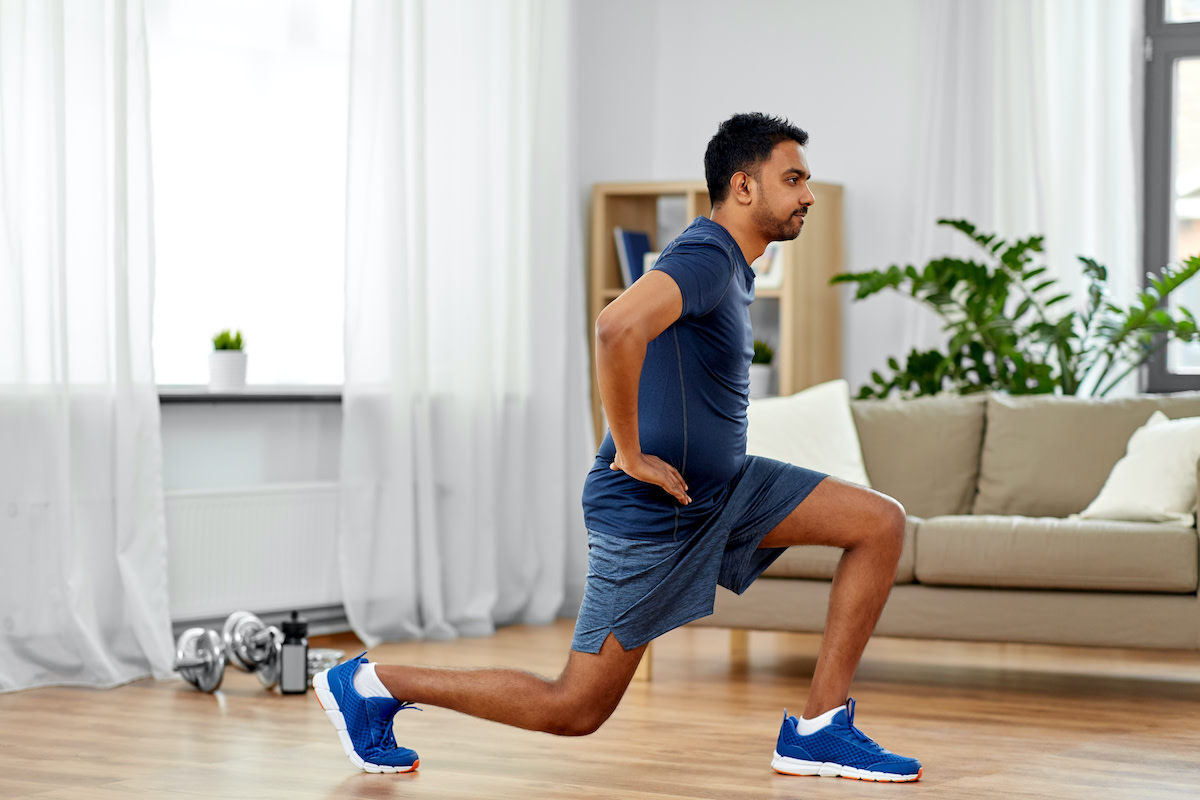Static Lunge Exercise Guide: How to Master Static Lunges
Written by MasterClass
Last updated: Aug 11, 2021 • 4 min read
Static lunges are a bodyweight exercise designed to build strength in your core and lower body. Learn more about the benefits of static lunges and how to do this lower-body workout with perfect form.
Learn From the Best
What Are Static Lunges?
Static lunges are a bodyweight exercise designed to build strength in your core and lower body. For static lunges, move into the lunge position and hold for a lower-body workout that targets your hip flexors, hamstrings, and quadriceps. Though it may look similar to a forward lunge, the static lunge uses a smaller range of motion and a static, split-stance starting position. Practicing static lunges properly will help you build the strength and coordination to practice several lunge variations such as side lunges, walking lunges, and split squats.
3 Benefits of Static Lunges
There are several notable benefits to performing static lunges.
- 1. Static lunges help build strength in your leg muscles. Strong hamstrings and quadriceps help you perform daily movements with ease.
- 2. Static lunges help improve your balance and coordination. The range of motion engages your core and lower back to activate your glutes and leg muscles, which can result in improved balance and coordination.
- 3. Static lunges are a great home workout. If you can take a large step forward, you can practice static lunges. With no need for equipment, the static lunge is a simple, lower-body exercise that you can practice anywhere.
3 Tips for Performing Static Lunges
Consider these tips for practicing static lunges to get the best workout possible and avoid common mistakes.
- 1. Assume a comfortable stance. After you take a large step forward, you should feel tension in your quads and hamstrings, but the movement should not be painful. Be sure to keep your knees square and your hips facing forward.
- 2. Increase the challenge by adding weights. To up the challenge level, try lunging while holding a pair of kettlebells or dumbbells. The added weight will make for a full-body exercise that builds upper-body strength.
- 3. Pair static lunges with cardio. Practicing bodyweight exercises in combination with cardio exercises—like jumping jacks or burpees—is one of the best ways to get a total-body workout.
How to Do Static Lunges With Proper Form
If you’re performing static lunges with weights, begin by using a weight that you can control for 2–3 sets of 8–12 repetitions on each side. Choose a weight that allows you to maintain good technique throughout all sets and repetitions.
- 1. Stand in a split stance with your front foot 2–4 feet in front of your back foot. Raise your back heel to place weight evenly across the ball of your back foot. The weight on your front foot should be evenly distributed as well. Grip the floor with your front foot to create a stable position.
- 2. Your front and back hip should be squared. Your posture should be tall, with your feet hip-width apart and a slight bend in your knees. Your shoulders should be over your hips or slightly ahead of your hips with a neutral head and neck position.
- 3. Your chin should remain tucked throughout the movement, as if you were holding an egg under your chin. Place your hands on your hips or hold dumbbells by your sides. Engage your core.
- 4. Begin the downward movement by bending the hip, knee, and ankle of the front leg and allowing your back knee to bend toward the floor.
- 5. Lower until your front leg and front knee bend at a 90-degree angle. Your back knee should be underneath your rear hip, 1–2 inches above the ground. Pause at the bottom of the movement.
- 6. To begin the upward movement, push your front foot into the ground to initiate standing. As you begin to stand, keep your chest high, squeeze your front glute, and allow your knee to straighten and your hip to travel forward. As you finish the movement, squeeze your quadriceps while maintaining a neutral spine and a slightly bent knee.
- 7. At the end of each repetition, your shoulders should finish directly over your hips. Imagine that your pelvis is a bucket filled with water and you’re attempting not to spill any of it. Push through your front heel to return to the standing position.
How to Work Out Safely and Avoid Injury
If you have a previous or pre-existing health condition, consult your physician before beginning an exercise program. Proper exercise technique is essential to ensure the safety and effectiveness of an exercise program, but you may need to modify each exercise to attain optimal results based on your individual needs. Always select a weight that allows you to have full control of your body throughout the movement. When performing any exercise, pay close attention to your body, and stop immediately if you note pain or discomfort.
To see continual progress and build body strength, incorporate proper warm-ups, rest, and nutrition into your exercise program. Your results will ultimately be based on your ability to adequately recover from your workouts. Rest for 24 to 48 hours before training the same muscle groups to allow sufficient recovery.
Want to Dive Deeper Into Your Wellness Journey?
Throw on some athleisure, fire up a MasterClass Annual Membership, and get ready to sweat it out with exclusive instructional videos from Nike Master Trainer and GQ fitness specialist Joe Holder. Want to improve your cardiovascular endurance? Give Joe’s HIIT workout a go. Trying to get a little swole? He’s got a strength training workout for that. From fitness tips to nutrition hacks, Joe will have you feeling healthier in no time.
